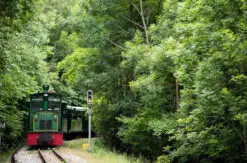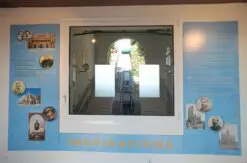The Sanctuary and the Montserrat mountain range are two of the favorite destinations both for Catalans and for all those who come to visit our land. But the attraction of this area does not end with La Moreneta; the mountain is surrounded by small, generally unknown villages that hide treasures at the height of the monastery.
Here’s a look at some of them.
1) MONISTROL DE MONTSERRAT
The village of Monistrol, where the rack railway has one of its stops, is perhaps the most visited of them all. It has been recorded historically since the 10th century.
Its antiquity is evidenced by the architecture of its old town but above all its great Gothic jewels: the hermitage of Sant Antolí, the bridge of the pilgrims and the Priory Palace; all dated to the early fourteenth century.
The visitor, in addition to walking through its cobbled streets, will find hundreds of routes around the village, at the foot of the mountain or between the dry fields.
In addition, if you love good food, you will find an unbeatable gastronomic offer in Monistrol. Its most famous product is clearly coca and curd, which when autumn begins opens its doors at the Coca and Curd Fair.
Apart from the fact that the people of Monistrol can enjoy the craftsmanship of the masons when October arrives, they also see how their two centenarian giants Ramir and Constança dance. Did you know that they weigh 40 pounds each?
2) EL BRUC
Almost everyone knows the Bruc for his drummer that scared the Napoleonic troops into the French War. But this village holds more than a legend: a statue. A statue located at the entrance of the village (C / de Bruc del Mig). We hope you are not scared.
The Bruc is the birthplace of climbing in Montserrat, several routes attract climbers from all over the country to climb the walls. If you like climbing this is the place to be.
We also have the “Way of the Battles” a route that wants to remember the path that the Napoleonic soldiers traveled twice on June 6 and 14, 1808.
The place that the walker will walk through was all a battlefield, as the form of confrontation was that of the “guerrilla”, a way of fighting invented at that time.
The pass of Can Maçana, where the defense against the invader was very strong, is today a park where you can rest, enjoy nature and the panorama, and starting point for excursions following the paths that go into the mountain. Below is the link for more information.
El Bruc has nothing to do with it, as every town in Catalonia has its own fairs, traditions and popular festivals.
We can find the Feast of St. Michael, which is celebrated on May 8 and consists of keeping a blessed loaf until the following year. The Timbaler festival is held in the first week of June. Or the Som País Fair where a celebration of social and environmental sustainability is held in the Montserrat Natural Park.
And if you like the custom guides the most, the Bruc City Council makes it easy for you as it has an audio guide where you can scan the QR codes you find through your Smartphone to find out more about where you are. you find.
3) COLLBATÓ
Right next to the Heather but with a particular story. Throughout the s. XX the second residences proliferate but without a doubt what characterizes this town is its Caves of Salnitre. The caves of Salnitre are caves about 550 meters deep and it is said that their organic and undulating shapes inspired Gaudí for works such as the Sagrada Família. In July, the “Gong Festival” is held inside, offering music concerts of new sounds.
And if you don’t mind, you can always stroll through the old town and rediscover the Romanesque church of Sant Coreli, where a magnificent Romanesque marble capital, from the Episcopal Palace of Barcelona, is preserved.




